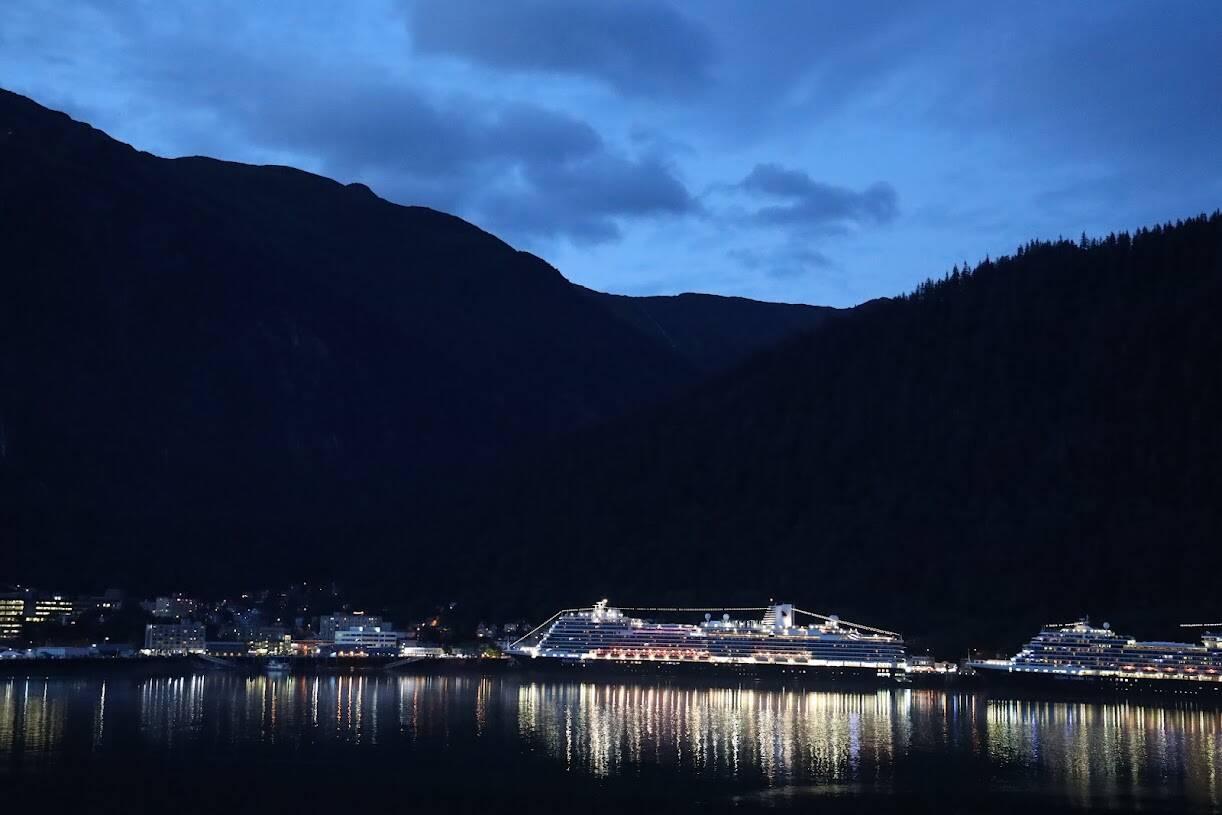Recommendations made by a tourism task force in 2020 will take at least a little bit longer to be formally adopted following a city Assembly vote.
On Monday night the City and Borough of Juneau Assembly voted to delay adopting cruise ship tourism policy objectives recommended by the Visitor Industry Task Force’s final report to allow for further public input after residents shared frustration with the lack of public comment opportunities.
“I’m extremely disappointed that the resolution showed up on a calendar consent agenda with no opportunity for public testimony,” said Kim Metcalfe, a longtime Juneau resident and critic of mass cruise tourism.
The Visitor Industry Task Force was a 10-member task force established by Mayor Beth Weldon that began its work in October 2019 and delivered a final report in March 2020. It was tasked with advising the city on addressing a range of tourism-related topics.
Though the Assembly accepted the VITF final report of tourism management priorities back in 2020 — which included more than 50 recommendations — the Assembly never formally implemented its policy recommendations, due in part to the COVID-19 pandemic halting efforts.
Passing a resolution would formalize CBJ’s intent to begin taking formal action toward long-range policy objectives like placing a limit on cruise ships to five ships per day in the downtown port, finishing construction of the Seawalk, allowing for more CBJ input and transparency on scheduling, electrifying cruise ship docks and creating a strategy to mitigate emissions and congestion along with more proactive industry management.
During the Monday night Assembly meeting, City Manager Rorie Watt requested the resolution be pulled from the consent agenda and placed in the public hearing portion of the agenda, per the request of Karla Hart, who like Metcalfe is both a longtime Juneau resident and critic of the cruise industry, which then allowed for public comment on the resolution.
Metcalfe and Hart used the opportunity to share their disappointment with the city for originally placing the resolution in the consent agenda — which does not allow for public comment — instead of placing it in the public hearing portion of the agenda, and said that they felt the Assembly did not offer adequate public process for the resolution and urged more opportunity for public comment along with multiple changes to the resolution before it is adopted.
After the comments, the Assembly voted to delay the vote on whether or not to pass the resolution until the next Assembly meeting to allow for further opportunities for the public to comment.
Metcalfe and Hart requested the Assembly amend the resolution during the meeting to change the limit on cruise ships to four, not five. Hart also expressed concern that the resolution outlined the limit specified for the Juneau port, not the entirety of Juneau, which Hart said could keep the door open for more cruise ship docks in Juneau. Hart asked the Assembly to also amend the resolution to set the limit for all of Juneau.
“You haven’t resolved the problems here so don’t leave the door open for someone to propose cruise ship docks elsewhere in Juneau,” Hart said.
Assembly member and former VITF chair Carole Triem told the Empire that she had requested prior to the meeting that the resolution be moved to be open for public comment, however, the change did not occur until during the meeting.
“That is on us for not doing that,” she said.
However, Triem said she does believe the city has already provided ample public process for the policy objectives back in 2019 and 2020 when the VITF met to identify the recommendations, and noted there will still be opportunities for public comment on each individual objective as they move forward.
“I think that we did have a really robust public process for the Visitor Industry Task Force report and those two were there and participated there,” she said. “There is still room for the public with the specific projects that come up.”
• Contact reporter Clarise Larson at clarise.larson@juneauempire.com or (651)-528-1807. Follow her on Twitter at @clariselarson.

